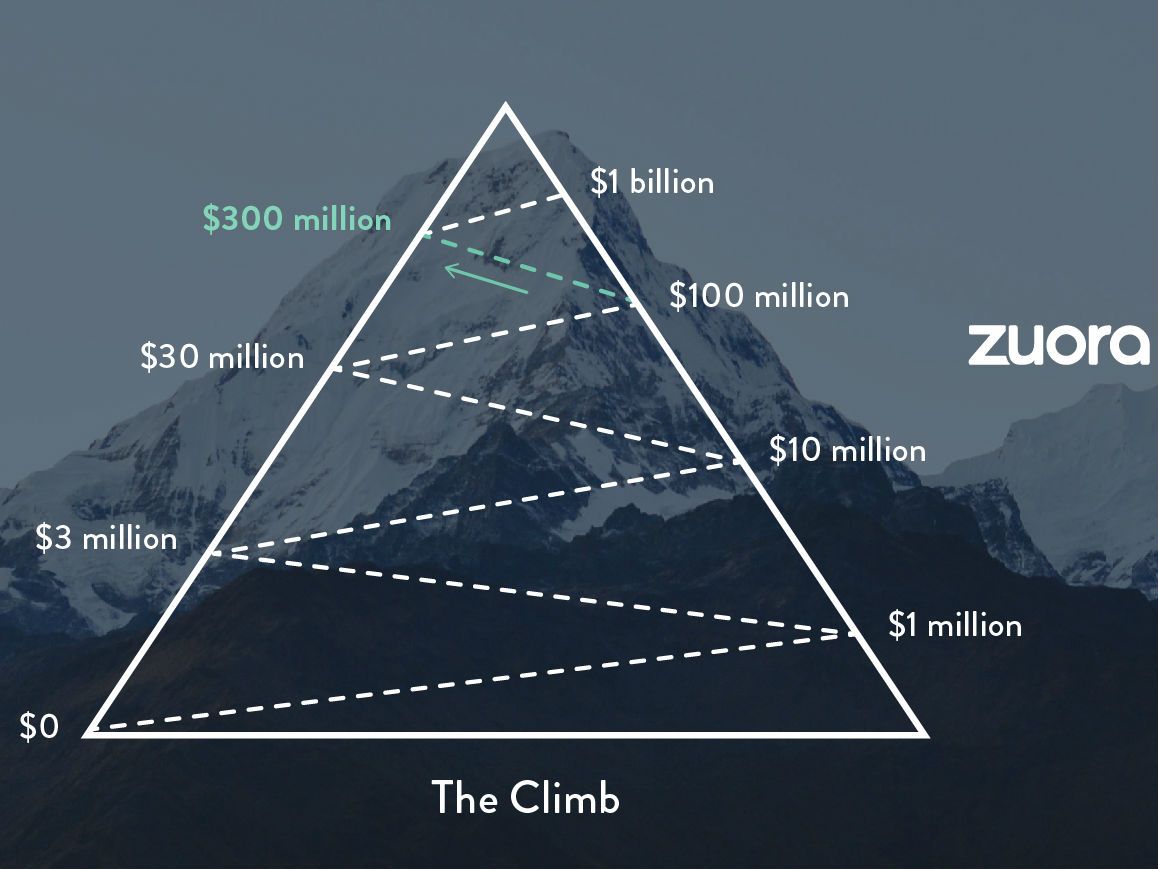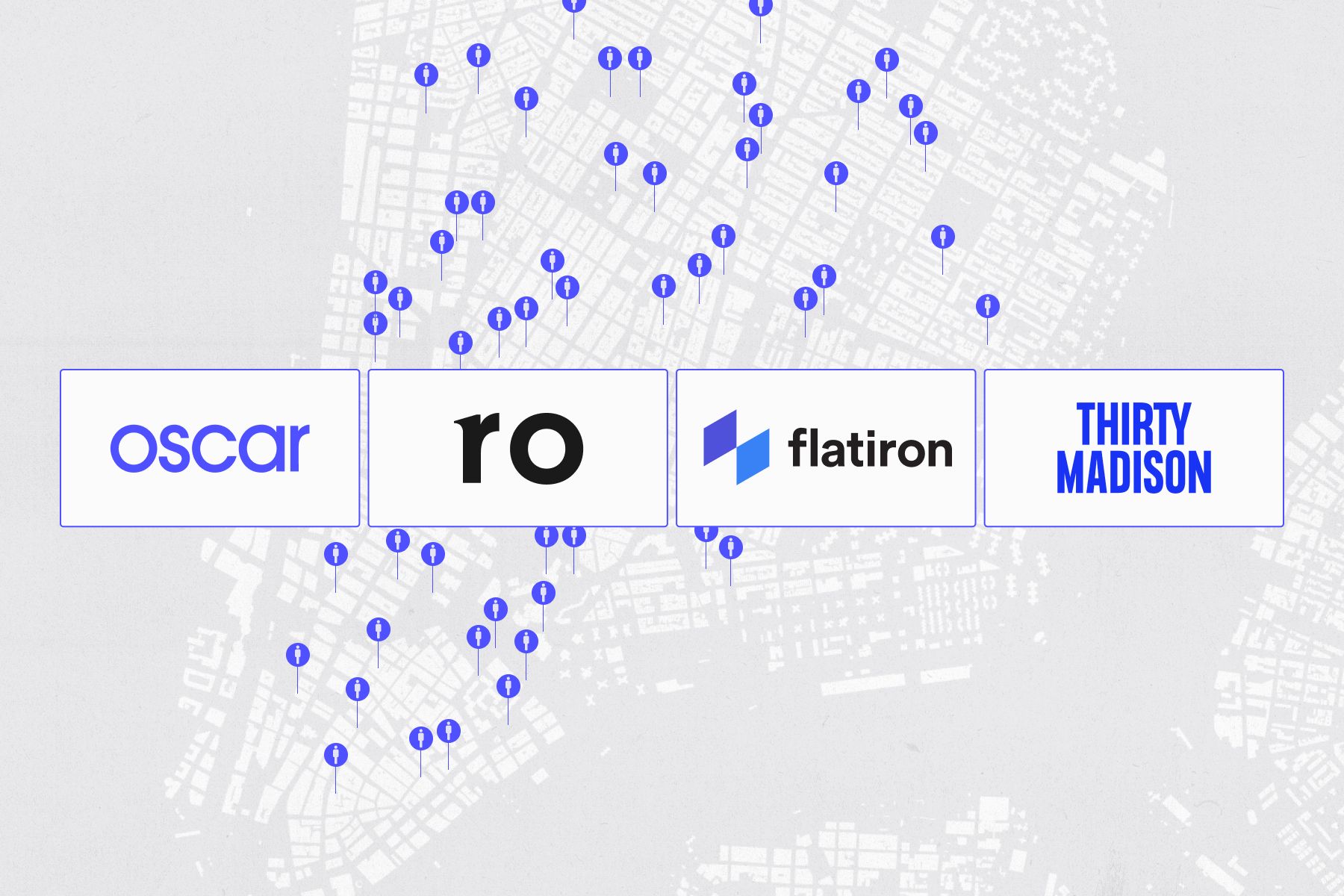Climbing the Mountain: What Zuora CEO Tien Tzuo Thinks About When Scaling A Company

Zuora Chief Executive Tien Tzuo knows a thing or two about scaling companies.
As the 11th employee at Salesforce.com, Tzuo helped the CRM behemoth reach $1 billion in sales and in his seven years as the head of subscription management software company Zuora (which just announced a $115 million funding round), sales have jumped from $0 to $100 million.
As Tzuo recently shared with a group of entrepreneurs at an Index Ventures event, his first-hand experiences not only taught him about building a SaaS company, but they also helped him crystalize his thoughts about scaling. To explain his viewpoint, he created a framework centered on the idea of mountain climbing. Climbers, Tzuo points out, normally don’t ascend straight up a cliff. Rather, they need to take switchback turns, which force them to make an “about face” at every leg. The same idea applies for startups; founders questing after $1 billion or more in sales need to be able to stop at multiple inflection points, break from the past and implement entirely new business plans, if necessary.
“At each of these stages, you’re a very different entity that focuses on very different things,” says Tzuo. (For SaaS companies in particular, Tzuo likes to set his mountain’s stages in intervals of 1s and 3s, because it’s convenient and “doubling a company feels too wide.”) “Even the advice you’re given at one stage is only relevant for a short period of time.” The companies that tend to stall out, he notes, are the ones that don’t focus on one of these climbing concepts, or are the ones that obsess about one inflection point, can’t re-set their thinking and then get stuck.
To further delineate his mountain metaphor, Tzuo said that he had specific areas of focus for each of his switchbacks:
· Prove the Idea ($0-$1 million) This first phase is fairly common for anyone with a good idea. “The key thing here is to work out the idea,” Tzuo says, noting that his stance is a bit against the grain. “The product may actually come later.”
· Prove the Product ($1-$3 million) Next, companies need to figure out the product that is implied by said idea. Is it broad, narrow or deep? While the contours of the product can still be in progress, Tzuo says, the $3 million mark means companies should know exactly what their product roadmap looks like and how they want to phase it in.
· Prove the Market ($3-$10 million) Reaching $10 million is a particularly significant decision point for a company, says Tzuo, because this is when it’s chances of survival increase. A $10 million company doesn't have to go out of business—especially if that money is solid recurring revenue, Tzuo adds. What these companies need to start doing is define their markets. (Is it a $100 million market? A $10 billion market?) “This will help you in raising money and figuring out the right exit strategy,” says Tzuo. “You're a real company now.”
· Prove the Business Model ($10-$30 million) Too many people try to prove their business model too early, says Tzuo. (The exception is if one’s business model is not quite at $10 million, but the burn rate is being kept low.) By $30 million, however, a company better have its business model worked out, or else they'll wind up losing a lot of money and find themselves potentially in a bind. Companies in this phase should also be thinking about their long-term gross margins, customer acquisition and churn costs, and furthermore, figuring out if their remaining issues can be resolved.
· Prove the Vision ($30-$100 million) This phase is all about scale, says Tzuo. Companies at this stage have hopefully figured out their model, have a plan to execute and only need worry about growth (and growth). Additionally, by the time a company hits $100 million, the IPO question will start to loom and execs need to be able to articulate a long-term vision to attract the next wave of investors. Be prepared to answer: Why is this company going to be a $1 billion company? How do you describe the industry that you are creating?
· Prove the Industry ($100-$300 million) Breaking through $100 million means that a company has truly arrived and has scale, says Tzuo. “Smaller companies are starting to surround you, like planets circling the sun.” This is when it's reasonable to start talking about being a "platform" or building an "ecosystem,” he notes. These things won’t happen overnight, but by the time a company reaches $300 million, it has to be able to talk about itself in terms of having created an industry and explain how, as the center of that expanding industry, it will continue to grow with it.
In addition to keeping companies honest, says Tzuo, his framework can also be a highly motivational tool. When Zuora first rounded $30 million in sales, Tzuo says he inspired his team by creating the idea of a “sprint to $100 million.” At $100 million, he consequently created an “ascent to $300 million.” The idea, he says, was to constantly encourage his team to throw out ineffective business models and experiment with new ideas in the name of being as successful as possible. As aptly summed up by business magnate John D. Rockefeller, a favorite of Tzuo’s: “Don’t be afraid to give up the good to go for the great.”
Posted on 11 Mar 2015
Published — March 11, 2015

